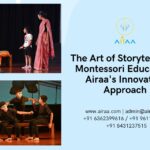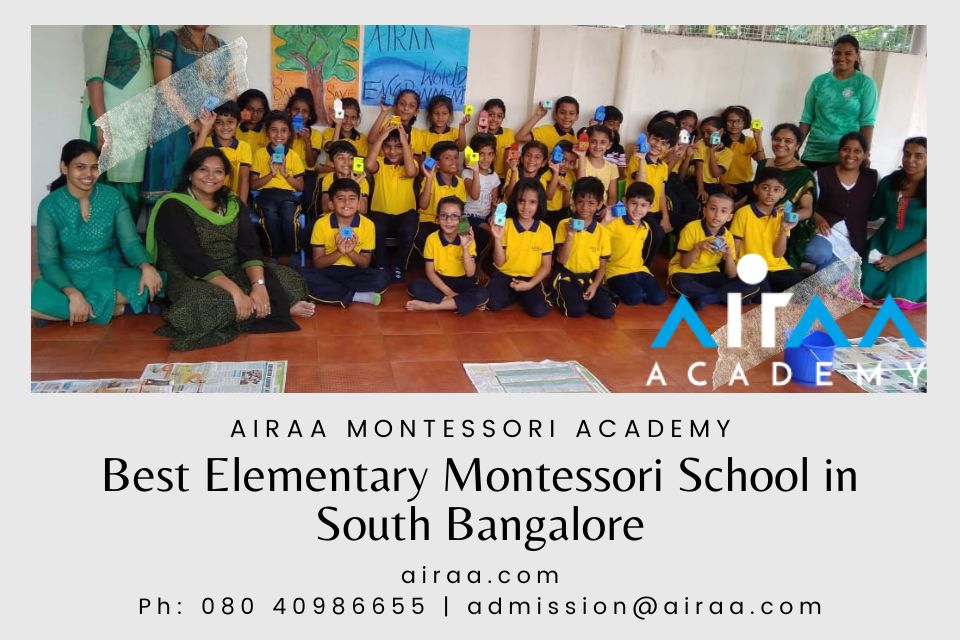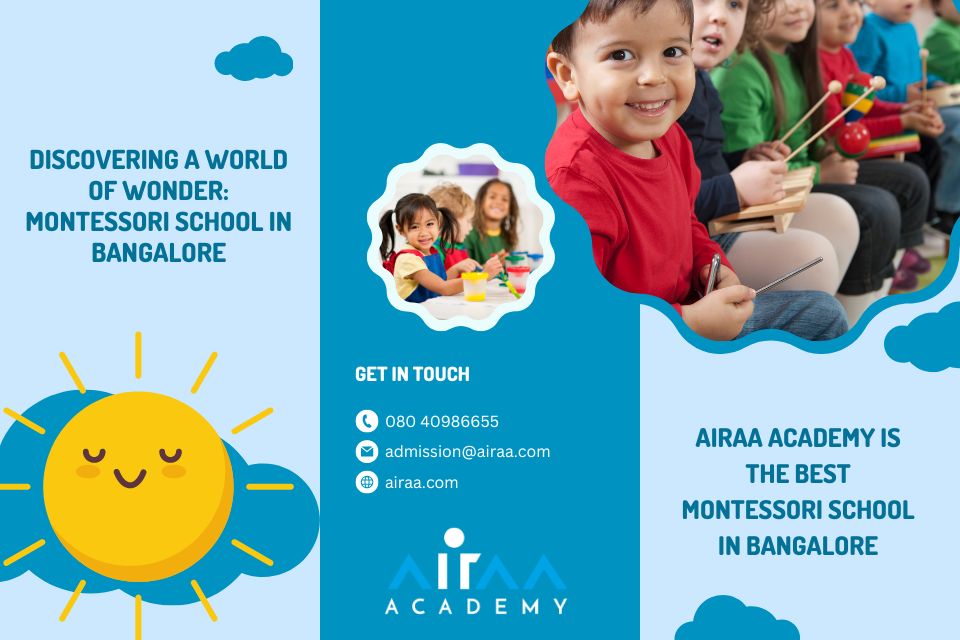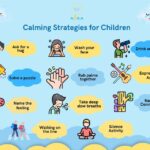Let your child study in the top Montessori school in Bangalore
Looking for the best approach to instill in your child a love of learning and the skills they need to be successful in both school and life? If so, you’ve probably done some research and learned about the idea of Montessori classes and the teaching techniques employed at Airaa Montessori Academy. We are the best Montessori in South Bangalore. You might not be aware of Montessori education origins or what makes it such a powerful tool for encouraging learner’s potential.
When you go into the history of Montessori and comprehend its philosophy, you’ll see that it’s one of the most effective ways to raise an inspired learner.
What is Montessori Education?
In contrast to the conventional teacher-centered education, the Montessori approach focuses on motivating learners to take charge of their learning. Facilitators support and assist the learners while also encouraging them to select their own activities and determine the most effective strategy for each problem.
Learners who attend Montessori schools are taught to respect rules, cherish cooperation, and consider how their actions influence others. Due to their passion for learning and inherent curiosity, learners continue to be creative and push themselves to succeed. In addition to learning about the subjects covered in the core curriculum, Montessori learners are also encouraged to be creative and curious thinkers.
If you are looking for the elementary Montessori in South Bangalore, you are at the right place.
Who was Maria Montessori?
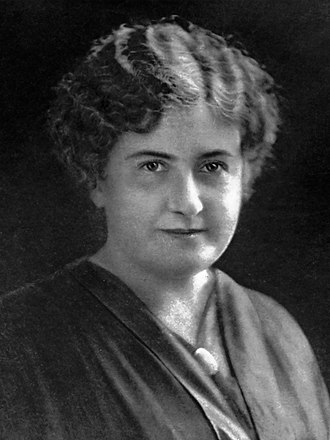
The originator of Montessori education, Maria Montessori, was born on August 31, 1870, in Chiaravalle, Italy. Maria Montessori excelled in school and displayed a strong sense of independence and both of her parents were well-educated. Even at an era when many women didn’t have access to higher education, her parents encouraged her to explore the books, libraries, and schools that were available to her since she was a bright, aspirational learner who loved learning.
She attended and graduated from the Sapienza University of Rome with a medical degree in 1896, becoming one of Italy’s first female physicians, as a result of her perseverance and passion for learning.
When the chance to train special education facilitators and learners presented itself, she practiced psychiatry. She put effort into learning which teaching techniques were most effective, and several of her learners achieved unforeseen progress that supported the efficacy of her strategy.
That indicated that the Montessori Curriculum was centered on meeting the needs of the learners, promoting their independence, cultivating their curiosity, and more.
How Her Own Learning Experiences Influenced Her
A significant event that profoundly changed early childhood education took place in 1907. In a depressed inner-city neighborhood of Rome, Maria Montessori developed a daycare facility for learners ages 3 to 7 who were gravely underserved. She gave the school the Italian name Casa dei Bambini, which means “Children’s House.”
All of her pupils had never been in a school before, and they were accustomed to being left alone while their parents were at work. It appeared to many, that it would be impossible to involve these indisciplined and unschooled learners in an education.
Montessori, however, firmly thought she could succeed. She had confidence in both herself and her methods, but more significantly, she had confidence in her pupils.
Itard and Séguin, her time at the Orthophrenic School, her studies in philosophy, pedagogy, and anthropology, as well as her experience there, all had an influence on Maria Montessori at this point and her distinctive educational philosophy started to take a coherent form. Respect for the child was at the heart of her method. “What really makes a teacher is love for the human child,” she said.
At the time, it was believed that young learners were “blank slates” who could only learn by being taught directly by an adult or older learner. The Montessori method, in contrast, was based on the idea that learners were intrinsically motivated to learn and discover new things. The facilitator’s job was to cultivate this inner potential by carefully studying each learner and giving them presentations which would help them learn the knowledge and skills necessary for their developmental stage. According to Maria Montessori, learners don’t need to be coerced into learning. When they are given the right materials in a peaceful, orderly setting; rather, they are ready to learn.
In contrast to a traditional classroom, where each student is required to give close attention to the teacher, Montessori argued that each learner requires close attention from the facilitator. And she did precisely that at her recently established Children’s House as she deepened her knowledge of how learners learn. She provided a wide variety of carefully crafted exercises and resources to her learners, only keeping those that piqued their interest and were effective in teaching a particular concept or ability.
Teaching Based on Real-World, Proven Techniques
Dr. Montessori observed these learners at the Casa dei Bambini (Children’s House) scientifically and found that they responded to the materials with intense focus, which led to a fundamental change in their way of being. Instead of their usual behaviors of fantasy, inattention, and disorder, they now exhibit a profound sense of peace, calm, and order in their surroundings.
After noticing this shift in all of the learners around her, Dr. Montessori came to the conclusion that she had discovered learner’s true, unaltered natures and established the Montessori Method. In the future, Dr. Montessori referred to this transformation as normalization and the new emerging learner as normalized.
Here is a timeline of Montessori education over the years: 1907: The Years of Founding
Because it concentrated on educating each learner according to his or her stage of development, the Casa dei Bambini was distinctive. Dr. Montessori worked with each learner to design a tailored education that emphasized that learner’s abilities. She also encouraged learners to take ownership of what they wanted to learn. To achieve their objectives, learners were urged to cooperate and work together.
In her book Il Metodo della Pedagogia Scientifica applicato all’educazione infantile nelle Case dei Bambini published in 1909, Dr. Montessori provided a thorough explanation of her educational methodology. Her book, The Montessori Education in English, drew the interest of academics everywhere, and over the course of the following two decades, Montessori institutions appeared on all six continents.
She established the Association Montessori Internationale in 1929 to offer teacher training and direction to the numerous Montessori schools growing globally. Maria Montessori is regarded as one of the most important figures in the development of education in the 20th century.
The Montessori Approach Forms
Maria Montessori carefully analyzed what she had learned about effectively educating young learners in order to offer her disadvantaged learners every chance for success.
She was aware of their eagerness to investigate their surroundings and swiftly assimilate new information. If the job matched their present stage of development, as well as their interests and natural talents, she had witnessed how they could focus for extended periods of time.
Keeping this in mind, she created her classroom and instructional materials to encourage the learner’s curiosity and allow them the opportunity to follow their interests within supportive bounds that may help them develop self-confidence and focus.
Outstanding Results in the Montessori Classroom
The pupils in Maria Montessori’s new school started thriving right away. They eagerly explored their new classroom and improved their capacity for self-control and concentration.
Initially boisterous, they soon calmed down into a pattern and got engrossed in the activities taking place in the classroom. They eagerly engaged in puzzle-solving, enjoyed discovery via hands-on activities, learnt to make meals, and took care of their classroom—all of which are still essential components of the true Montessori environment today.
Montessori Grows as a Powerful and Effective Educational Movement
These learners in Rome had such a rapid transition that people took notice. Soon, visitors from all over the world were arriving to observe Montessori’s teaching techniques in action.
She started to give seminars and well-liked books to train others to adopt her incredibly successful methodology after receiving interest from educators all around the world. More Montessori schools began opening up in Europe and the United States within a few years, sparking an educational movement that has benefited young learners for decades.
Montessori developed her methods for use in elementary classrooms and with teenagers as her influence on the preschool sector grew. She did this to make sure that the successful education of preschoolers could be built upon, fostering their love of learning and preparing them for lifelong academic and social success.
After years of global travel and seeing two world wars, Maria Montessori developed a love for fostering peaceful interactions and a global consciousness, both of which are now features of a true Montessori education.

Airaa, The Best Montessori School in South Bangalore
Airaa Montessori school in South Bangalore offers powerful, revolutionary classrooms that value each learner’s distinctive character. We provide a remarkable substitute for conventional education that allows learners to flourish and take advantage of possibilities to learn at their own speed.
We make it a priority to consistently support learners as they develop into their best selves and create a lifelong love of learning that they can use in all the facets of their lives making us the best Montessori school in South Bangalore.
The numerous learners who have benefited from learning and developing in our classes are the best evidence of the Montessori method’s efficacy. So don’t just take our word for it; read what other pleased parents are saying about our school for yourself and consider the benefits a Montessori education could have for your child. We are the best elementary Montessori school in South Bangalore. Airaa Academy in Bangalore offers a comprehensive Montessori-Based Elementary education, providing a nurturing environment for holistic development and academic excellence.
Contact us to know more about Airaa Montessori Academy, Bangalore. For admissions, visit our website.


